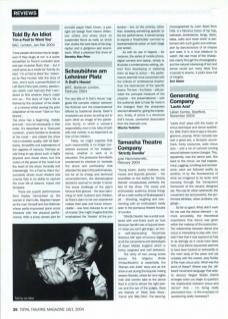The very title of A Doll's House suggests the complex relation between the fictional and the presentational offered by traditional drama. Ibsen's characters are shown as acting out to each other an image of the patriarchal family, in which a woman's responsibility, even in her roles of both wife and mother is as dependent as that of her children.
Today, we might suppose that such responsibility is no longer considered exclusive of her independence, whether in work or in education. This production from Berlin proclaimed its intention to recreate the shock and controversy that attended the play's first performances, but for all its energy and technical accomplishment, the dramaturgical decisions seemed to render it banal. The social challenge of the play's famous final gesture – the door slamming on both husband and children, as Nora's claim to her own experience makes their past and future irreconcilable – was here reduced to an act of murder. One might imagine that this emphasised the theatre of the production – but, on the contrary, rather than revealing something specific to the live performance, it served simply to expose a theatricality common to representational action on both stage and screen.
As with its use of objects – for instance, the series of mobile phone, digital camera and laptop, simply to illustrate a contemporary setting, distinct from developing or exploring them as keys to action – the performance seemed more concerned with the indices of professional theatre than the resonances of the specific drama. The text – the fiction – still provided the principal measure of the physical – the presentational – with the audience able to hear far more in the dialogue than the characters seemed allowed to, giving the impression, finally, of actors in a directorial doll's house, somewhat dissociated from the dramatic one.

